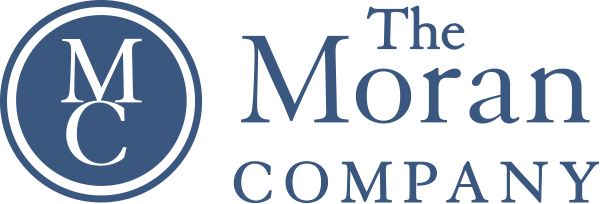Hospital Fundraising Best Practices
by William J. Moran, J.D., M.S.Ed.
A development audit of three major hospitals culminated in a list of ‘best practices’. These practices are:
1. Managing Relations with Hospital Administration
Hospital administration is a primary stakeholder for fundraising. Obviously, having a strong collaborative relationship with the hospital administration greatly simplifies the task of development. The foundation staff and administration should work together on fundraising priorities. These priorities should generally flow from the hospital’s strategic planning. On the other hand, administration must be sensitive to how charitable dollars are “different” from other funding revenue. Administration must understand that meeting the needs of the donor is critical for success.
2. Developing the Case for Support
The case for support pulls together the reasons for “why” the fundraising project is important for the hospital. The case speaks to both vision and need. However, vision is foremost. The case for support should be an expression of how the project is going to make a real difference in “healing or saving lives.” Out of that vision comes specific programs needed to achieve it. From these programs come “dollar costs” and “needs.” There is no formula for putting a case together. It can vary from just a couple of pages to many pages. The process of putting down on paper the reasons for the campaign is as important as the final document. This process forces an organization and its volunteers to come to a “meeting of the minds” on why the fundraising should take place.
3. Prospect Research
Hospital fundraisers certainly understand the importance of obtaining information about the donor’s interests and capabilities. Still, hospitals lag behind colleges in prospect research. Two main items emerged from the collaborative audit and study:
- The importance of making written summaries of donor calls and then entering this information into a donor database.
- The expeditious use of data screening services which will run an organization’s list of names through a national database to obtain information.
4. Grateful Patient Solicitation
Grateful patients are a primary constituency for charitable support of most hospitals. However, these individuals hold more potential for some hospitals than others, i.e. hospitals that serve inner-city area may have primarily patients with limited income and assets. All approaches must comply with HIPAA regulations concerning privacy. The audit revealed the following approaches for identifying, cultivating and soliciting grateful patients:
- Regular visits to hospitalized donors to show the Foundation’s appreciation for their support and to express concern for their care (no solicitation takes place while the donor is hospitalized).
- Building relationships with key physicians and nurses who refer grateful patients to the Foundation when they express gratitude and the desire to give back. Many doctors and nurses are uncomfortable in this role, but the few who are can be key advocates for the Foundation.
- Regular direct mail solicitation of discharged patients for purposes of donor acquisition.
- Tours of the hospital for major gift donor/prospects patients
- Social and informative gatherings sponsored by the Foundation for major gift donor/prospects patients.
- Grateful patients are approached to “honor” a favorite physician or nurse.
- Grateful patients are approached to memorialize family and other loved ones.
5. Solicitation of Physicians
Like other individuals, physicians are more responsive if the fundraising project hits a “hot button” of interest. So fundraising directed toward individual departmental needs, medical education, medical research and other projects that appeal to self-interest are often more attractive to physicians. Getting physicians involved on the Foundation board and in other volunteer activities will strengthen relationships with this important group. Many will not be interested but those that are will be key advocates in motivating others to support the Foundation.
Finally, consider life insurance as a giving tool. Practicing physicians are often young enough that life insurance is an attractive vehicle. In addition, many physicians like the opportunity to “leverage” a relatively small annual premium payment into a large endowment gift.
6. Solicitation of Hospital Employees
Employee giving is important, not only for the dollars raised, but also for the purpose of raising awareness of the charitable character of the hospital. This makes them ambassadors for the Foundation as they come into contact with grateful patients. Successful employee giving programs may include the following:
- An employee giving drive is conducted annually.
- An employee fundraising committee is active with broad representation from a number of different departments.
- Payroll deduction is the primary giving avenue.
- A variety of giving options are provided that appeal to employee interests.
- Premiums (such as t-shirts) are used to encourage and recognize giving.
- Solicitation revolves around “fun” events such as a lunch time “picnic” sponsored by the Foundation.
- New employees are educated about the Foundation at employee orientation.
- Donors are generously recognized in an annual listing on boards (for instance hung outside the cafeteria entrance) and by other means.
7. Annual Campaigns
Annual “campaigns” are generally efforts throughout the year that raise unrestricted dollars for the hospital’s general needs. Charitable giving to hospitals is most often designated for certain areas or projects. Therefore, unrestricted dollars for a Foundation’s general needs are in short supply. The tension between identifying needed projects that are attractive to donors and the need for unrestricted monies is a continuing challenge for many hospital Foundations.
In addition, hospital donor bases are usually small. Therefore, donor acquisition becomes very important to the development effort. Annual campaigns should have a strong acquisition component.
Components of annual campaigns include, but certainly are not limited to, the following:
- An annual calendar that coordinates all fundraising activity.
- A “top forty” prospect list is used to manage “moves” on cultivation and solicitation on top prospects.
- Grateful patients are solicited several times per year through donor acquisition mailings.
- Mailings are segmented according to donor interest.
- The Foundation has a website with giving “buttons.” Foundation materials “drive” supporters to the website.
8. Corporate/Foundation Giving
Partnering is a good word for Foundation giving. Foundations are looking for organizations to “partner” with to implement their giving strategies. For hospitals with innovative health programs, Foundations remain important prospects. The key is to match a Foundation’s giving priorities to hospital projects.
Corporations are more likely to become sponsors of an event such as a golf tournament for a children’s hospital than to make large stand-alone gifts. They generally need some incentive, such as publicity or other recognition for a contribution. Sponsorships provide that incentive.
Ways to cultivate relationships with Foundation representatives and corporate CEO’s include the following:
- “Behind the scenes” programs that take individuals on tours of individual departments and allow them to view certain medical procedures.
- Recruiting CEO’s for the board and other leadership roles.
- Regular reports back to funders on how the funded project fared.
9. Planned Giving
Older individuals are important beneficiaries of services in most hospitals. Therefore, gifts through wills, trusts and other planned giving vehicles hold significant potential. Specific “best practices” to come out of the audit included the following:
- Setting annual goals for planned giving around specific tasks such as number of donor visits, seminars, mailings, new members of the heritage society etc.
- Initiating a “Heritage Society” (recognition society).
- Ongoing planned giving articles in Foundation publications.
- Featuring donor testimonials of planned givers.
- Strong outreach to allied professionals (attorneys, CPA’s, financial planners).
- Targeted planned giving mailings with follow up.
10. Capital Campaign
The three hospitals in the audit were either in a major capital campaign, just finished one, or in the planning stages for one. This is an indication of the importance of campaigns in successful hospital fundraising. There is no question that campaigns provide a way to “leap frog” development stages. They “stretch” development programs. They accomplish this by forcing a clear delineation of the case for support, increasing volunteer involvement, increasing solicitation frequency etc. One executive director in the audit said she regretted waiting two years between campaigns and, as a result, losing momentum. However, campaigns can also fail. Keys to success include:
- The maturity of the development program prior to the campaign (size of the donor base, the number of major gift donors and prospects, past volunteer involvement, etc.).
- Perceived importance of the campaign project. (The proposed project is seen as necessary and even urgent.)
- Commitment and ability of the staff.
- Commitment and ability of the volunteer leadership.
11. Donor Recognition and Acknowledgment
Prompt acknowledgement and personalized recognition closes the circle of giving by leaving a donor fulfilled and thus paving the way for future gifts. The following were used by the participating hospitals to recognize and acknowledge gifts:
- Telephones calls for gifts over a specified amount (ex., $500)
- Letters from the Board and other volunteers
- Articles and listings in written publications
- Small group appreciation lunches
- Follow up reports on use of contributions
- Tours to show the results of generosity
- Plaques
- Other
12. Database Management
Data management is a neglected but critical component of hospital development programs. The ability to segment lists, avoid duplicate mailings to donors, and avoid mailings to deceased constituents are just a few of the benefits of good data management. All three hospitals used Raiser’s Edge software. The fact that two of the three hospitals were struggling with this issue is typical. It is often said that “it all comes down to people.” This is perhaps even more applicable in data management. The one hospital with strong data management, in response to serious problems, had hired an excellent staff person who cleaned up their database. The audit revealed the following keys to successful data management:
- The need for both a competent data manager and a data entry person
- The importance of having written data management policies to ensure consistency in data entry and management
- The importance of continued training opportunities for software
- The importance of having cross-training among staff
Conclusion
These insights provide a starting point for hospitals seeking to improve their fundraising programs. For those interested in further information, the AHP (Association of Healthcare Philanthropy) website provides excellent resources. See www.ahp.org.
Want more articles like this delivered directly to your inbox? Sign up for our E-Newsletter.
© 2014 The Moran Company, “We find great nonprofit executives.” We specialize in searches for nonprofit executive directors, directors of development/fundraising staff, and other top nonprofit leadership. www.morancompany.com
Posted in Fundraising Articles, Hospital Search Articles
Subscribe
Join more than 10,000 nonprofit professionals, community leaders and board members who receive e-mail updates from The Moran Company.






